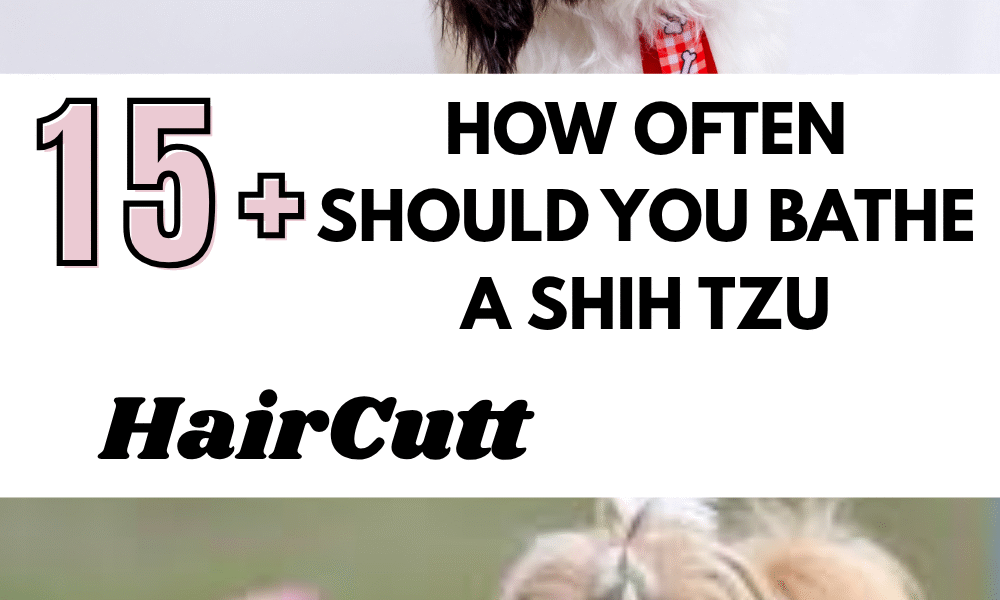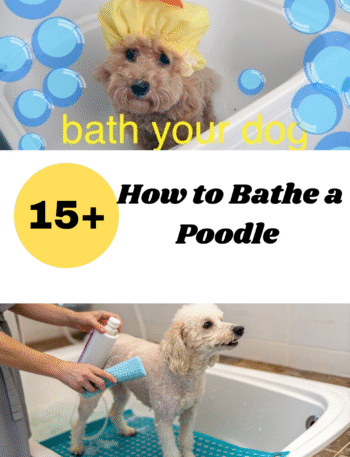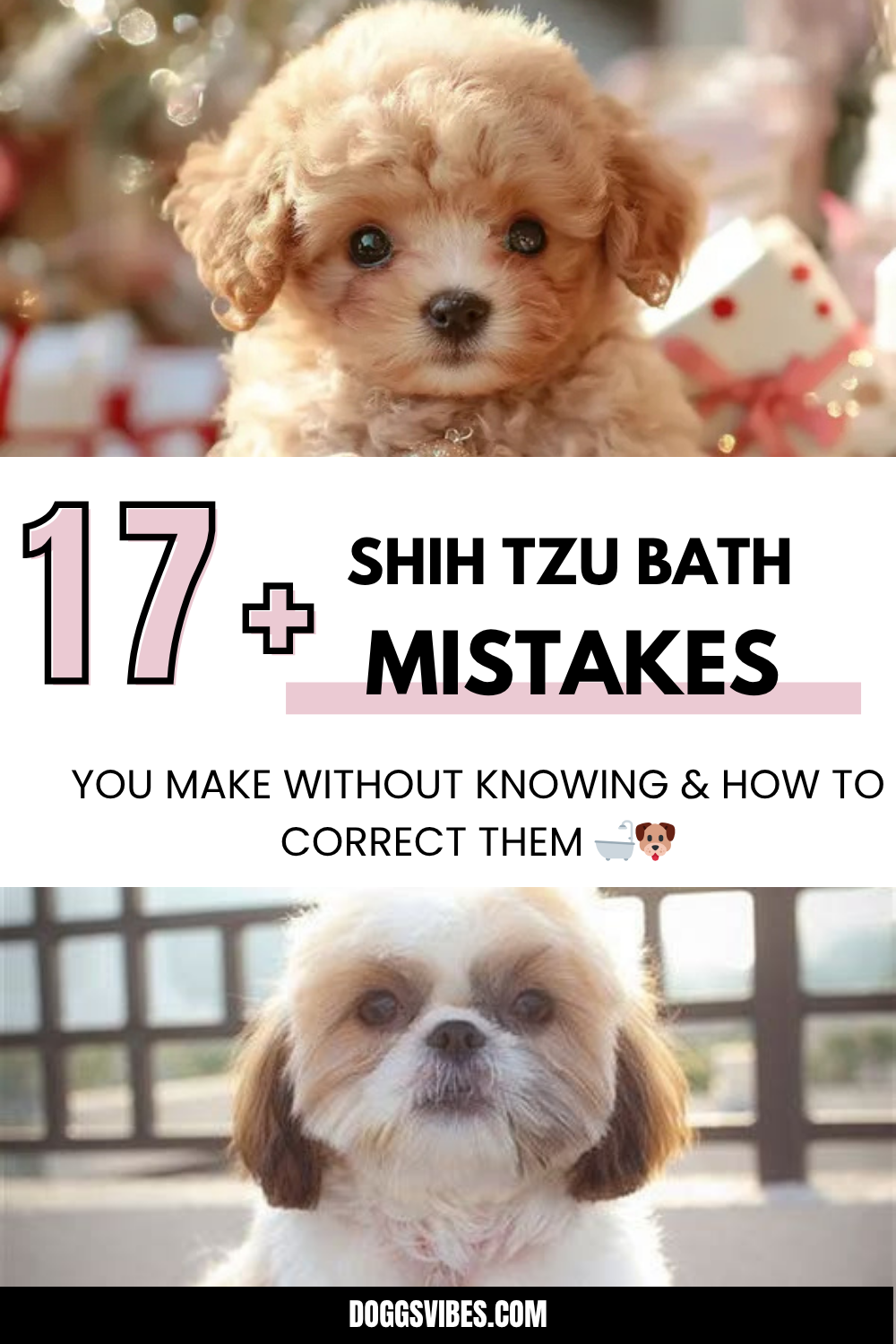Introduction
Bathing a Shih Tzu isn’t just about rinsing off the dirt — it’s a vital part of maintaining the health, hygiene, and happiness of this unique toy breed. With their luxurious double coat, sensitive skin, and expressive facial features, Shih Tzus require a tailored approach to bathing that’s unlike most other dogs. Done right, a bath can strengthen your bond, improve coat texture, prevent infections, and even reduce grooming costs long-term.
But do it wrong — using the wrong shampoo, over-bathing, skipping drying steps — and you could cause itchiness, matting, or skin conditions that are hard to reverse.
This complete guide gives you everything you need: how often to bathe, which products to use, a professional-level bathing routine, and mistakes to avoid. Whether you’re a first-time Shih Tzu owner or a seasoned dog parent looking to refine your technique, you’ll find answers here.
How Often Should You Bathe a Shih Tzu?
The ideal bathing frequency for a Shih Tzu depends on a few key factors:
| Condition | Bath Frequency |
|---|---|
| Indoor-only Shih Tzus | Every 3–4 weeks |
| Active/Outdoor Dogs | Every 2–3 weeks |
| Allergy-prone skin | Every 1–2 weeks (with medicated shampoo) |
| Puppy (under 6 months) | Every 4–6 weeks |
| Senior Shih Tzus | Every 4 weeks (unless otherwise advised) |
✅ Pro Tip:
More frequent bathing is not always better. Overbathing strips the coat of natural oils, leading to dryness, dandruff, and a higher risk of yeast overgrowth. Stick to a predictable schedule and monitor skin condition regularly.
What You Need Before the Bath
Before you even turn on the water, gather your supplies. Preparation reduces stress and allows for a smoother, safer bath session.
🧴 Bathing Checklist
- Dog-friendly, pH-balanced shampoo
- Conditioner (for long coats or dry skin)
- Wide-tooth comb and slicker brush
- Ear-cleaning solution and cotton balls
- Soft, absorbent towels
- Non-slip bath mat
- Blow dryer (with cool or warm setting only)
- Detangling spray or grooming mist
- Treats for positive reinforcement
Optional:
- Tear stain remover
- Microfiber bathrobe or drying coat
- Anti-fungal/anti-itch spray
Choosing the Right Shampoo for a Shih Tzu
Not all dog shampoos are created equal, and Shih Tzus are especially sensitive to harsh or artificial ingredients.
✅ What to Look For:
- pH-balanced (around 6.5–7.5)
- Hypoallergenic ingredients
- Free from sulfates, parabens, and alcohol
- Gentle cleansers like aloe vera, oatmeal, or chamomile
- Tear-free formula for face washing
🚫 What to Avoid:
- Tea tree oil (toxic in high amounts)
- Artificial dyes or fragrances
- Human shampoo (disrupts pH)
🧪 Special Considerations:
| Condition | Shampoo Type |
|---|---|
| Dry or itchy skin | Oatmeal, colloidal silver |
| Flea issues | Vet-approved flea shampoo |
| Fungal/yeast infections | Antifungal medicated shampoo |
| Tear stains | Boric acid–based eye cleansers |
Pre-Bath Grooming: Don’t Skip This Step
Brushing your Shih Tzu before a bath prevents water from tightening existing tangles and mats — a major problem for long-coated dogs.
Pre-Bath Checklist:
- Detangle thoroughly with a slicker brush
- Use a comb to check for hidden mats behind ears, elbows, and under the tail
- Trim around eyes and paws if needed
- Place cotton balls in ears to prevent water entry
- Clip nails (so they don’t scratch themselves)
🔍 For Matted Fur:
Do not bathe a Shih Tzu with severe mats — water makes the matting worse. Detangle dry or consult a groomer.
Step-by-Step: How to Bathe a Shih Tzu Like a Professional
1. Prepare the Space
- Fill the tub or sink with lukewarm water (check with your elbow).
- Place a non-slip mat in the bottom.
- Keep all tools within arm’s reach.
2. Wet the Coat Thoroughly
Start by gently wetting from the neck downward. Avoid spraying water directly on the face. Use a cup or handheld sprayer.
Be patient: the double coat takes longer to fully saturate.
3. Apply Shampoo
- Lather shampoo into your hands first, then work into the coat from neck to tail.
- Use your fingers to massage in circles, reaching down to the skin.
- Wash armpits, underbelly, tail base, and sanitary areas carefully.
4. Clean the Face Separately
- Dampen a washcloth with diluted shampoo (tear-free).
- Wipe around the eyes, under the muzzle, and beard.
- Rinse thoroughly with a clean, damp cloth.
5. Rinse—Then Rinse Again
Shih Tzus have dense coats, so shampoo residue can hide in fur and cause irritation. Rinse twice thoroughly, lifting the coat to ensure all soap is out.
6. Apply Conditioner (Optional)
Use a cream rinse or spray-in conditioner. Leave for 2–3 minutes, then rinse.
Conditioner helps:
- Prevent mats
- Soften long coats
- Protect skin from dryness
Post-Bath Drying & Aftercare
Shih Tzus should never be left to air-dry, especially in cool climates.
1. Towel Dry First
- Wrap in a high-absorbency towel or drying robe.
- Gently pat (don’t rub) to prevent frizzing or tangling.
2. Blow Dry on Low Heat
- Use a dog dryer or a human dryer with cool/warm setting only.
- Always brush while drying to prevent tangles.
- Work in sections — start from the head and move backward.
3. Post-Bath Brushing
Once dry, comb the coat fully.
- Use a slicker brush followed by a metal comb
- Focus on areas that tangle fast: underarms, belly, behind ears
4. Final Touches
- Wipe eyes with tear stain remover
- Apply detangling spray if needed
- Clean ears with a vet-approved solution
- Reward your pup with treats!
Common Bathing Mistakes to Avoid
| Mistake | Why It’s a Problem |
|---|---|
| Using human shampoo | Upsets skin pH, causes dryness |
| Bathing too often | Strips natural oils |
| Leaving water in ears | Causes infections |
| Skipping brushing before bath | Leads to matted coat |
| Not drying properly | Risk of fungal infections and chills |
Bathing a Shih Tzu Puppy vs Senior: Key Differences
Puppy Bathing Tips:
- First bath at 10–12 weeks
- Use extra gentle shampoo
- Keep sessions short (5–7 minutes)
- Introduce dryer slowly
Senior Bathing Tips:
- Use non-slip support under joints
- Shorter, warmer baths (no chills)
- Look out for lumps, sore spots
- Be gentle with drying and brushing
Seasonal Bathing Adjustments
Winter:
- Always dry completely before letting them outside
- Use warm water and heated towels
- Don’t overbathe — can worsen dry skin
Summer:
- Use cooling aloe-based shampoos
- Avoid midday sun if bathing outside
- Extra rinses for sand, sweat, or bugs
After the Bath: Grooming Follow-Up
Don’t stop at drying — now’s the perfect time to finish the job.
| Task | Benefit |
|---|---|
| Trim paws | Cleaner indoor living |
| Brush coat | Prevents tangles, keeps it smooth |
| Apply grooming mist | Adds softness and scent |
| Inspect ears and paws | Early detection of issues |
| Note changes in skin/coat | Signs of allergies or infections |
FAQs: Everything Owners Ask About Shih Tzu Baths
❓ Can I use baby shampoo for my Shih Tzu?
Not recommended. Even baby shampoo is formulated for human pH, which differs from dogs.
❓ What if my Shih Tzu hates the bath?
Use calming treats, gentle handling, desensitization training, and never force the process.
❓ Can I bathe my Shih Tzu at night?
Yes, but ensure your dog is completely dry and warm before bedtime.
❓ What age can I start bathing my puppy?
10–12 weeks, after the second round of vaccinations.
❓ Is professional grooming still needed?
Yes, especially for haircuts, nail trims, and de-matting every 4–6 weeks.
Final Tips: Bathing Your Shih Tzu Like a Pro
- Stick to a consistent routine — dogs thrive on predictability.
- Always inspect skin for redness, scabs, or parasites.
- Keep baths positive and calm — reward afterwards.
- Take before/after pictures to monitor progress.
Conclusion: A Clean Shih Tzu Is a Happy Shih Tzu
Bathing your Shih Tzu isn’t just about keeping them clean — it’s an opportunity to bond, prevent health problems, and keep their beautiful coat looking its best. With the right tools, frequency, and techniques, you can give your pup a spa-like experience from the comfort of your home. Stick to this expert routine and you’ll notice the difference in how your dog looks, feels, and behaves — because nothing feels better than being clean, fresh, and loved.




